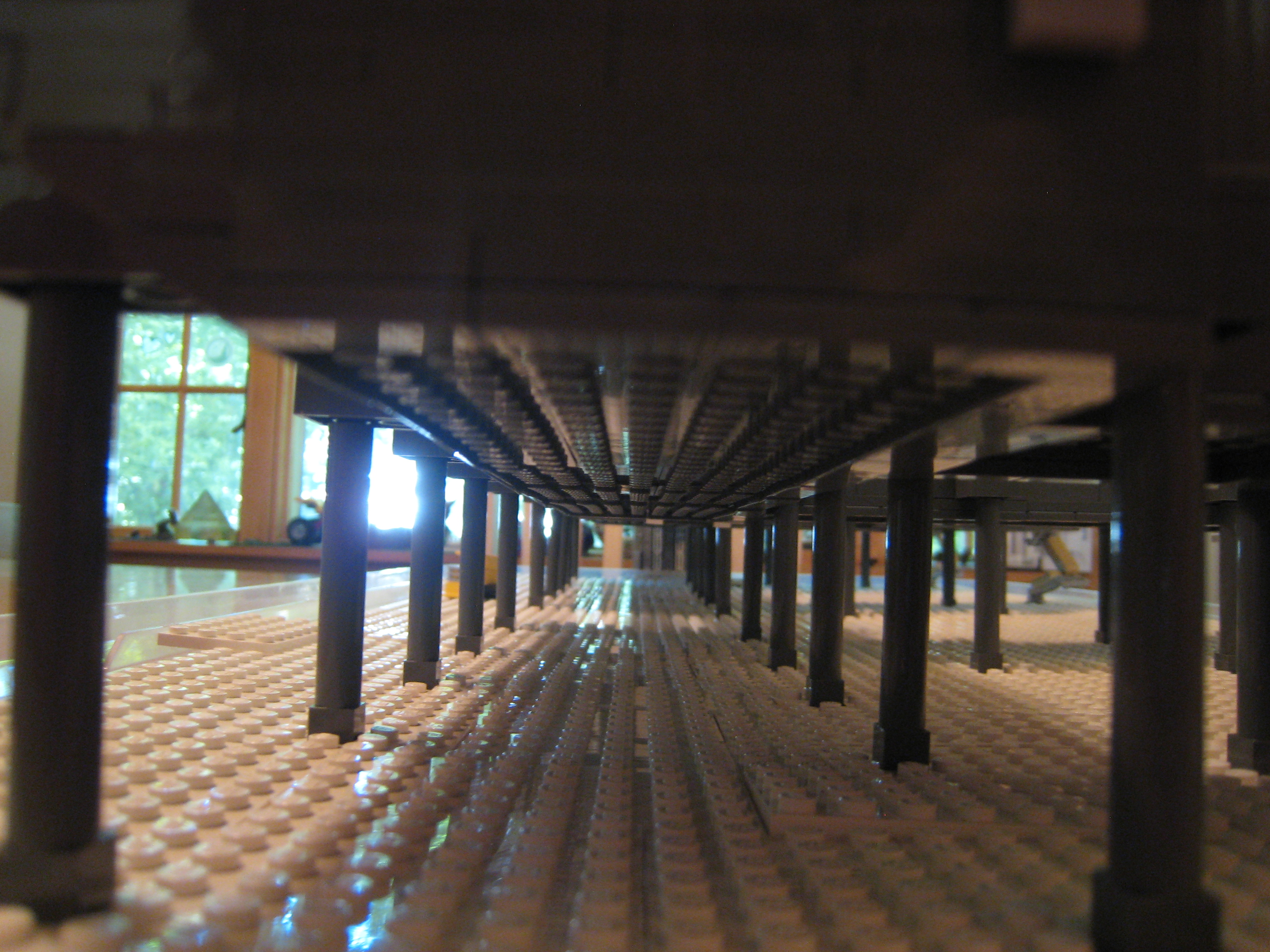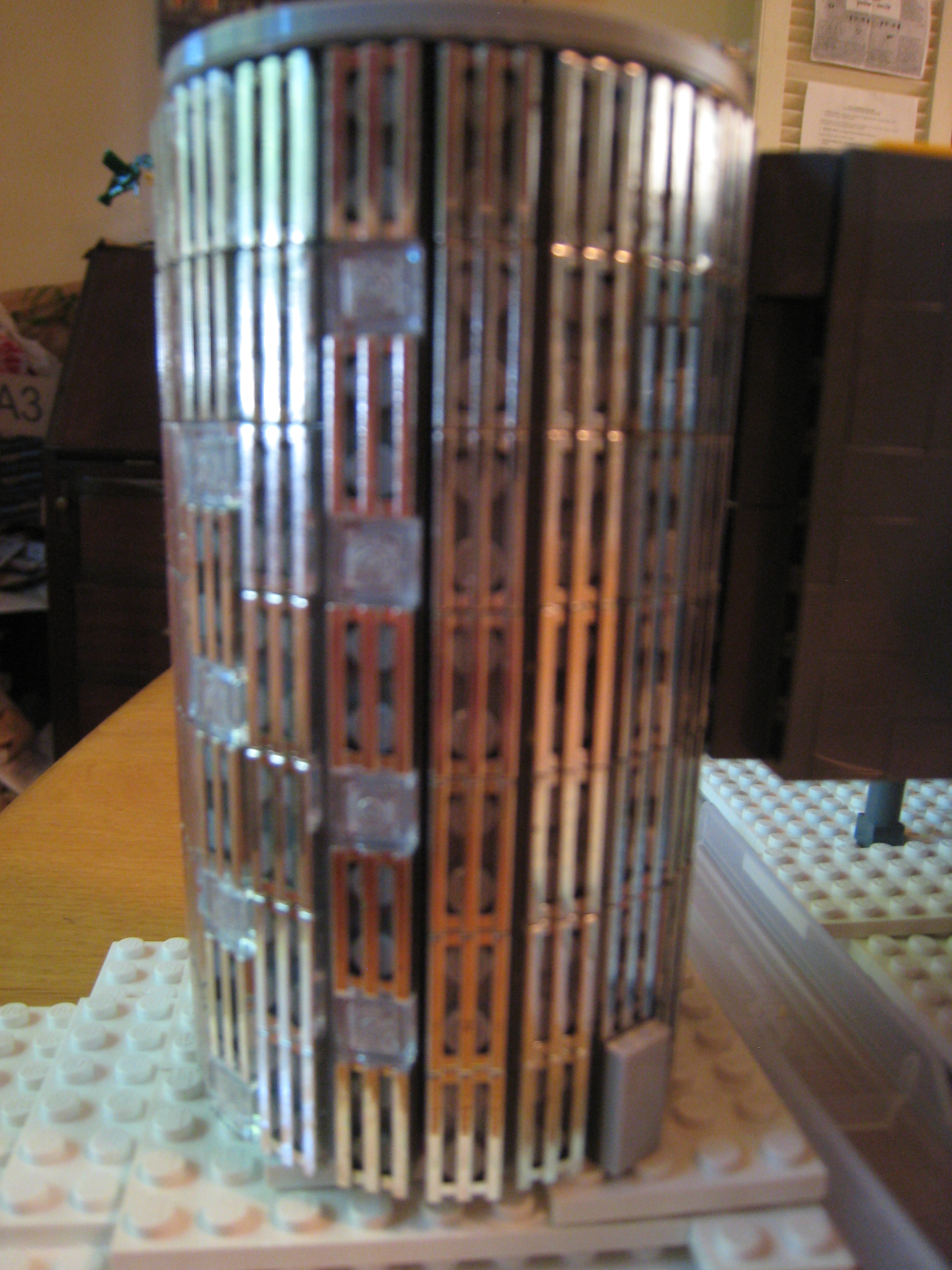It is home at the South Pole to nearly 200 people each summer. In the dark winters, up to 50 live there.
The large structure here is the third (and current) Amundsen-Scott station[A-Q], which is named after the leaders of the first two expeditions to reach the South Pole, Norwegian Roald Amundsen and Briton Robert Falcon Scott. Unlike any other building its size (about 120m/400ft long) in the world, all its components have been air-lifted to its construction site. More than 400 flights of the New York Air National Guard's ski-equipped LC-130 aircraft were needed for this task.
 |
 |
The front of the station is shaped like an airplane wing, and it faces into a nearly constant 10-15 knot wind that sweeps away most of the snow that would otherwise accumulate beneath. Since all directions from the geographic South Pole are north, normal directions are not useful. The South Pole base uses a notional "grid direction" system aligned with the prime meridian, so Greenwich, England, is "north", and New York City is "west". To the "southwest" is a range of 3000m mountains responsible for the wind.
The first Amundsen-Scott Station was built for International Geophysical
Year (1957), and it was abandoned after about 18 years because it had become a
hazard, having been buried by drifting snow. The current station has been
designed to last at least 25 years, and it was built between 2001 and 2008 for
US $150 million, less than the cost of Newton North High School.
The station sits on 36 piers [A] which can be raised in 25cm (10in)
increments to keep it above the snow. In all, it is designed to
be raised by up to two full floors, and as of mid-2015, it had already
been raised twice. It includes a conference room [B], gymnasium [C],
dining hall and kitchen[D], single year-round rooms for 44 people [E],
and single summer rooms for an additional 152 people. At one end is
the "beer can" [F], which contains a spiral staircase leading down to
the ice tunnels 15m (50 feet) below, and a cargo elevator. At the
other end is an oval platform ("Destination Alpha", [G]) which is the
main entrance to the station. There is a mezzanine above the science
labs [H] for roof-mounted experiments that can be conducted inside the
station, an emergency power plant[I], sick bay, a small library [J], a
post office [K], a self-operated laundry [L], a sauna [M], arts and crafts [N]
and music [O] rooms, a store [P] and a self-contained greenhouse [Q].
 |
 |
 |
 |
 |
 |
 F: Beer Can |
 F': (LEGO model) Beer Can |
 |
 |
 |
 |
 |
 |
 |
 |
 |  |
 |  |
 |
The Greenhouse was designed as a drop-in module at the University of Arizona (Tucson), about as far climatically as one can get from the South Pole. Residents of the station use it during the winter as their sole source of greens, melons, and flowers, and year-round as a quiet place for meditation. |